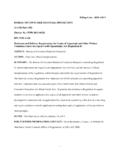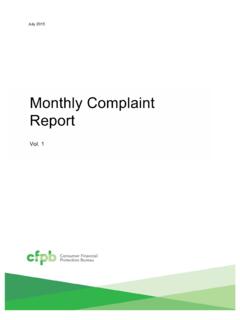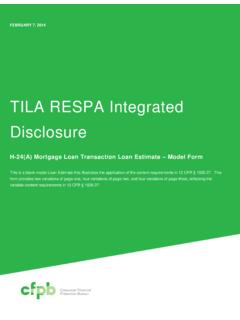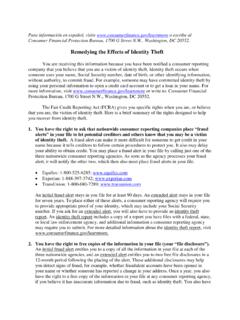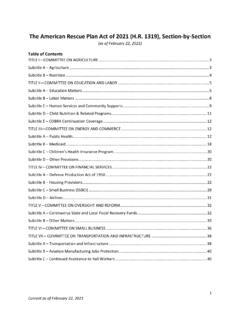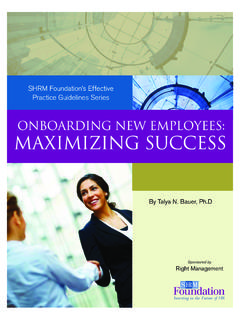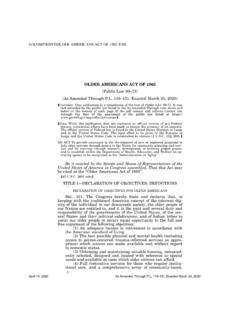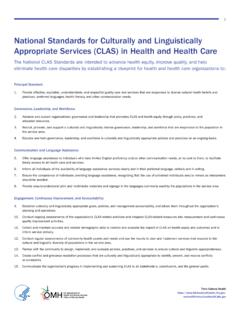Transcription of CFPB Laws and Regulations MLA
1 CFPB Laws and Regulations MLA CFPB September 2016 MLA 1 Military Lending Act (MLA) Interagency Examination Procedures 2015 Amendments Background The Military Lending Act1 (MLA), enacted in 2006 and implemented by the Department of Defense (DoD), protects active duty members of the military, their spouses, and their dependents from certain lending practices. These practices could pose risks for servicemembers and their families, and could pose a threat to military readiness and affect servicemember retention. The DoD regulation2 implementing the MLA contains limitations on and requirements for certain types of consumer credit extended to active duty servicemembers and their spouses, children, and certain other dependents ( covered borrowers ).
2 Subject to certain exceptions, the regulation generally applies to persons who meet the definition of a creditor in Regulation Z and are engaged in the business of extending such credit, as well as their For covered transactions, the MLA and the implementing regulation limit the amount a creditor may charge, including interest, fees, and charges imposed for credit insurance, debt cancellation and suspension, and other credit-related ancillary products sold in connection with the transaction. The total charge, as expressed through an annualized rate referred to as the Military Annual Percentage Rate (MAPR)4 may not exceed 36 The MAPR includes charges that are not included in the finance charge or the annual percentage rate (APR) disclosed under the Truth in Lending Act (TILA).
3 6 In addition, among other provisions, the MLA, as implemented by DoD: Provides an optional safe harbor from liability for certain procedures that creditors may use in connection with identifying covered borrowers; 1 10 USC 987. 2 32 CFR Part 232. 3 32 CFR (i). 4 The MAPR is calculated in accordance with 32 CFR (c). 5 32 CFR (b). 6 The MAPR largely parallels the APR, as calculated in accordance with Regulation Z, with some exceptions to ensure that creditors do not have incentives to evade the interest rate cap by shifting fees for the cost of the credit product away from those categories that would be included in the MAPR.
4 Generally, a charge that is excluded as a finance charge under Regulation Z also would be excluded from the charges that must be included when calculating the MAPR. Late payment fees and required taxes , fees that are not directly related to the cost of credit are examples of items excluded from both the APR and the MAPR. However, certain other fees more directly related to the cost of credit are typically included in the MAPR, but not the APR. The most common examples of these fees application fees and participation fees have been specifically noted in the regulation as charges that generally must be included in the MAPR, but would not be included in the APR under Regulation Z.
5 CFPB Laws and Regulations MLA CFPB September 2016 MLA 2 Requires creditors to provide written and oral disclosures in addition to those required by TILA; Prohibits certain loan terms, such as prepayment penalties, mandatory arbitration clauses, and certain unreasonable notice requirements; and Restricts loan rollovers, renewals, and refinancings by some types of creditors. Statutory amendments to the MLA in 2013 granted enforcement authority for the MLA s requirements to the agencies specified in Section 108 of These agencies include the Board of Governors of the Federal Reserve System, the Consumer Financial Protection Bureau (CFPB), the Federal Deposit Insurance Corporation (FDIC), the National Credit Union Administration (NCUA) the Office of the Comptroller of the Currency (OCC), and the Federal Trade Commission (FTC).
6 State regulators also supervise state-chartered institutions for MLA requirements pursuant to authority granted by state law. In July 2015, DoD published revisions to the MLA implementing regulation8 that: Extend the MLA s protections to a broader range of credit products; Modify the MAPR to include certain additional fees and charges; Alter the provisions of the optional safe harbor available to creditors for identification of covered borrowers; Modify the disclosures creditors are required to provide to covered borrowers; Modify the prohibition on rolling over, renewing, or refinancing consumer credit; and Implement statutory changes, including provisions related to administrative enforcement and civil liability for MLA violations (for knowingly violating the MLA, there is potential for criminal penalties).
7 Previously, the MLA regulation only applied to certain types of credit, namely: narrowly defined payday loans, motor vehicle title loans, and tax refund anticipation loans with particular terms. The current rule defines consumer credit subject to the MLA much more broadly, generally paralleling the definition in Regulation Z. Some examples of additional credit products now subject to MLA protections when made to covered borrowers include: Credit cards; Deposit advance products; Overdraft lines of credit (but not traditional overdraft services);9 and Certain installment loans (but not installment loans expressly intended to finance the purchase of a vehicle or personal property when the credit is secured by the vehicle or personal property being purchased).
8 7 National Defense Authorization Act for Fiscal Year 2013, Pub. L. 112-239, section 662(b), 126 Stat. 1786. 8 80 Fed. Reg. 43560. 9 An overdraft line of credit with a finance charge is a covered consumer credit product when: it is offered to a covered borrower; the credit extended by the creditor is primarily for personal, family, or household purposes; it is used to pay an item that overdraws an asset account and for which the covered borrower pays any fee or charge; and the extension of credit for the item and the imposition of a fee were previously agreed upon in writing.
9 CFPB Laws and Regulations MLA CFPB September 2016 MLA 3 Credit agreements that violate the MLA are void from inception. For most products, creditors are required to come into compliance with DoD s July 2015 rule on October 3, 2016. For credit card accounts, creditors are not required to come into compliance with the rule until October 3, Definitions 32 CFR Consumer Credit Consumer credit is credit offered or extended to a covered borrower primarily for personal, family, or household purposes, and that is: Subject to a finance charge; or Payable by a written agreement in more than four installments. The MLA regulation s definition of consumer credit has been amended to align more closely with the definition of the same term in Regulation Z.
10 It is DoD s intent that the term as used in the MLA regulation should wherever possible be interpreted consistently with Regulation Z. Notably, however, the MLA and the implementing regulation do not apply to certain types of loans extended to covered borrowers that are covered by Regulation Z, including: Residential mortgages (any credit transaction secured by an interest in a dwelling), including transactions to finance the purchase or initial construction of a dwelling, any refinance transaction, a home equity loan or line of credit, or a reverse mortgage; Credit transactions expressly intended to finance the purchase of a motor vehicle11 when the credit is secured by the motor vehicle being purchased.


